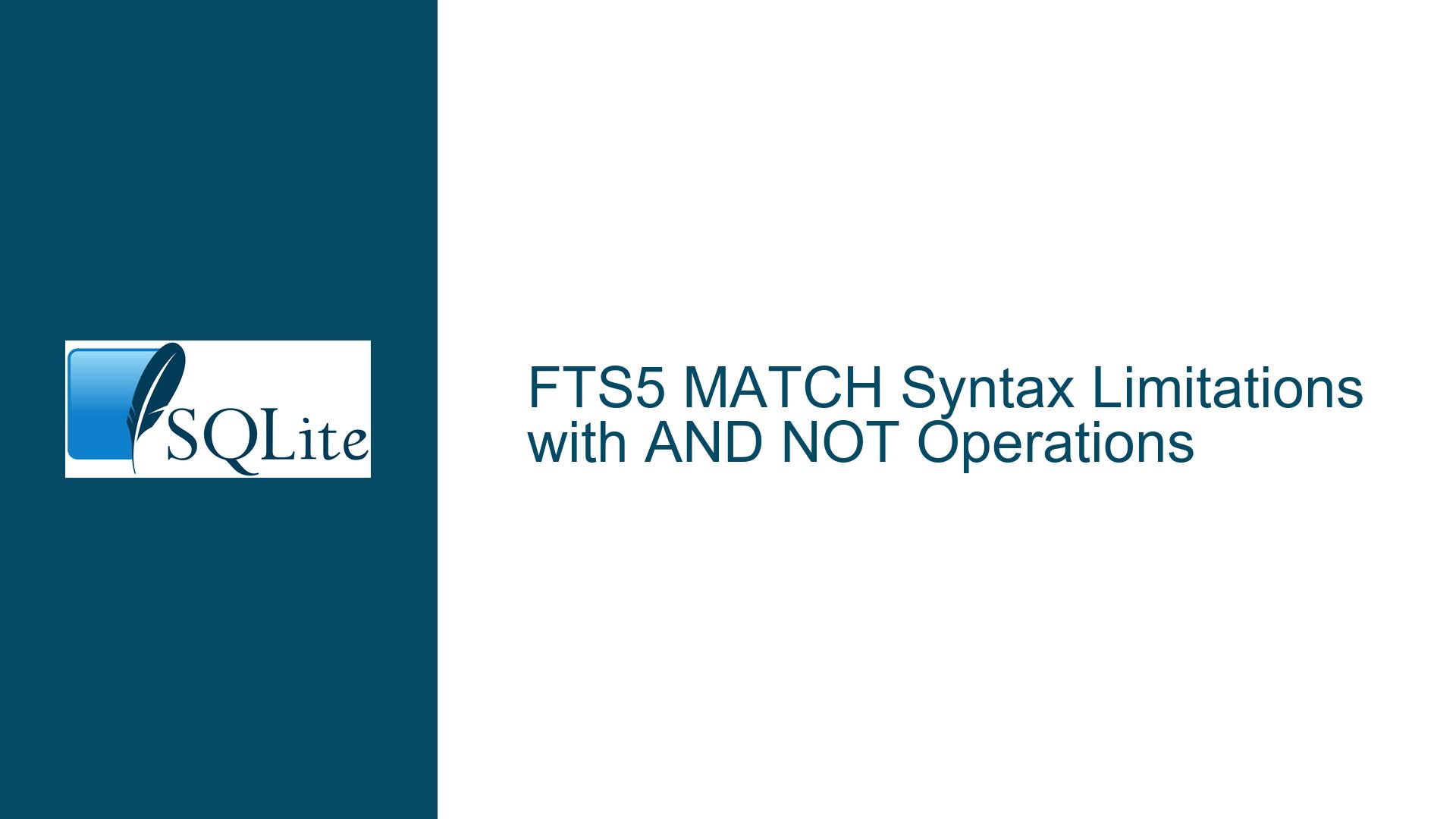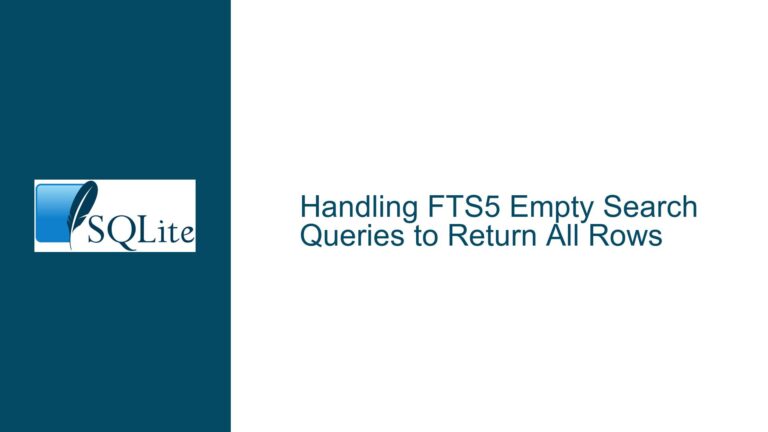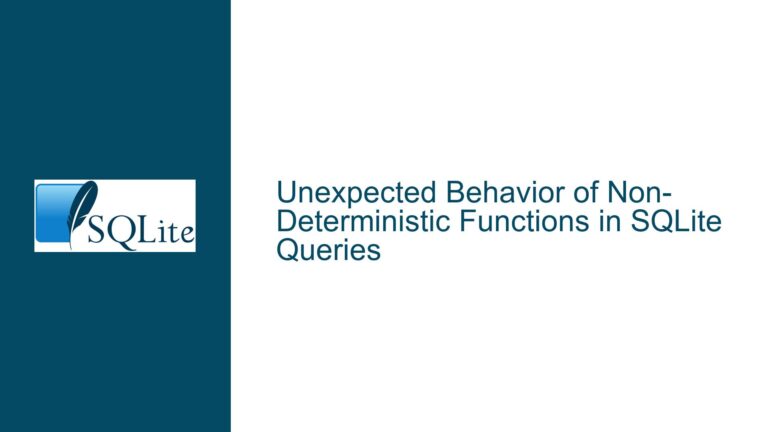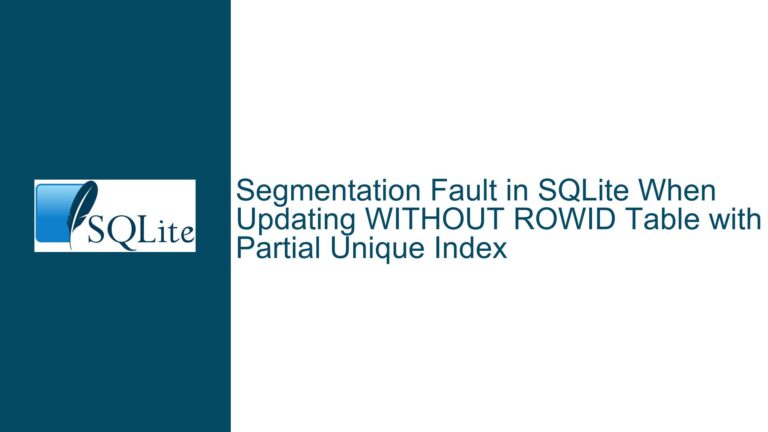FTS5 MATCH Syntax Limitations with AND NOT Operations
FTS5 MATCH Parsing Errors with AND NOT Combinations
The SQLite FTS5 extension is a powerful tool for full-text search, allowing users to perform complex queries on text data. However, one notable limitation is its handling of the AND NOT operator within the MATCH clause. When attempting to use expressions like x AND NOT y or x AND (NOT y), FTS5 returns a syntax error, specifically fts5: syntax error near "NOT". This behavior is inconsistent with the support for simpler NOT operations like x NOT y, which are parsed correctly.
The issue arises because FTS5 does not recognize the AND NOT combination as a valid operator. While x NOT y is interpreted as "find documents containing x but not y," the addition of AND disrupts the parsing logic. This limitation can be particularly problematic for users who rely on automated systems to generate queries, as these systems may produce AND NOT combinations without the ability to modify them.
The absence of support for x (NOT y) further complicates the matter. Although this syntax is not valid in FTS5, its inclusion in the discussion highlights the desire for more flexible query parsing. Users often expect FTS5 to handle logical combinations in a manner consistent with other SQL operations, but the current implementation falls short in this regard.
FTS5 Query Parsing Logic and Operator Precedence
The root cause of the AND NOT parsing error lies in the way FTS5 processes query strings. FTS5 uses a custom parser that interprets search terms and operators according to a predefined set of rules. While this parser supports basic logical operators like AND, OR, and NOT, it does not account for combined operators like AND NOT. This limitation is a deliberate design choice, as FTS5 prioritizes simplicity and performance over comprehensive logical operator support.
The NOT operator in FTS5 is designed to function as a unary operator, meaning it operates on a single term or expression. For example, NOT y is valid because it applies the negation to y alone. However, when NOT is combined with AND, as in x AND NOT y, the parser struggles to interpret the sequence correctly. This is because the parser expects AND to be followed by a term or another operator, not a negation.
Another factor contributing to the issue is operator precedence. In standard SQL, NOT has higher precedence than AND, meaning x AND NOT y is interpreted as x AND (NOT y). FTS5, however, does not enforce this precedence rule, leading to parsing errors. The lack of support for parentheses in x (NOT y) further exacerbates the problem, as users cannot manually enforce precedence.
Workarounds and Alternative Query Structures
To address the AND NOT parsing issue, users can employ several workarounds and alternative query structures. One approach is to rewrite the query using supported operators. For example, x AND NOT y can be expressed as x NOT y, which achieves the same result without triggering a syntax error. While this workaround is effective for simple queries, it may not be feasible for complex queries generated by automated systems.
Another option is to use the NEAR operator in combination with NOT. For instance, x NOT NEAR y can be used to find documents containing x but not y within a specified proximity. This approach leverages FTS5’s support for proximity searches while avoiding the AND NOT syntax. However, it requires careful tuning of the proximity parameter to ensure accurate results.
For users who require more advanced logical combinations, a hybrid approach can be employed. This involves splitting the query into multiple steps and combining the results programmatically. For example, the query x AND NOT y can be executed as two separate queries: one for x and another for NOT y. The results can then be intersected in the application layer to achieve the desired outcome. While this method introduces additional complexity, it provides greater flexibility and control over the query logic.
In cases where modifying the query structure is not an option, users can consider preprocessing the query string to replace unsupported operators with valid alternatives. For example, a script can be used to transform x AND NOT y into x NOT y before passing it to FTS5. This approach requires careful handling to ensure that the transformation does not alter the intended meaning of the query.
Finally, users should be aware of the limitations of FTS5 and plan their schema and query design accordingly. By understanding the constraints of the FTS5 parser, users can avoid common pitfalls and optimize their full-text search implementation. For scenarios where FTS5’s limitations are prohibitive, alternative full-text search solutions, such as external search engines or custom implementations, may be worth considering.
In conclusion, while the AND NOT parsing issue in FTS5 presents a challenge, it can be mitigated through careful query design and alternative approaches. By leveraging supported operators, preprocessing query strings, and employing hybrid query strategies, users can achieve the desired search functionality without encountering syntax errors. As with any database system, understanding the strengths and limitations of FTS5 is key to building robust and efficient full-text search applications.






